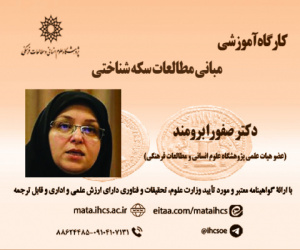طراحی الگوی نفوذ سرزمینی (مقاله علمی وزارت علوم)
درجه علمی: نشریه علمی (وزارت علوم)
آرشیو
چکیده
هدف: هدف اصلی این تحقیق شناسایی مؤلفه های نفوذ سرزمینی و طراحی الگوی مرتبط است. روش شناسی: این تحقیق ازلحاظ هدف کاربردی و از حیث ماهیت و روش توصیفی - تحلیلی است. برای شناسایی مؤلفه های نفوذ سرزمینی از اسناد و مدارک بالادستی و منابع کتابخانه ای استفاده شده است. تجزیه وتحلیل داده های کیفی مبتنی بر روش تحلیل تماتیک (نرم افزار مکس کیودا)، انجام که به شناسایی بیش از 87 مضمون پایه منجر گردیده است. یافته ها: مضامین پایه مرتبط با نفوذ سرزمینی پس از ترکیب و تلخیص به 48 مضمون محوری تقلیل و در نهایت 9 مقوله اصلی به عنوان مؤلفه های کلیدی استخراج شده است و در نهایت پس از اخذ تأیید خبرگان با یک پرسشنامه محقق ساخته، الگوی نفوذ سرزمینی ارائه شده است. نتیجه گیری: نتایج و یافته های این تحقیق نشان گر آن است که نفوذ سرزمینی یکی از مهم ترین ابعاد در حوزه نفوذ ژئوپلیتیکی بوده و مؤلفه های کلیدی آن عبارت اند از: برخورداری از موقعیت گذرگاهی برتر، قرارگیری در یک موقعیت ارتباطی بهتر، داشتن وسعت و قلمرو گسترده تر برای کشور نفوذکننده، هیدروپلیتیک و روابط آبی نفوذکننده در سایر کشورهای پیرامونی، شرایط اقلیمی مناسب تر نسبت به کشورهای نفوذپذیر، قرارگیری مکان های موردتوجه مانند: مکان های مذهبی و زیارتی یا قومی و تاریخی و... در داخل کشور نفوذکننده، تعدد همسایگان، دسترسی به آب های آزاد و میزان تسلط بر تنگه های بین المللی.متن
Designing a pattern of territorial influence
Objective: The main aim of this study is to identify the components of territorial influence and to design a related model.
Methodology: This research is applied in terms of its purpose and descriptive-analytical in nature and methodology. To identify the components of territorial influence, upper-level documents and library resources were utilized. Qualitative data analysis was carried out using thematic analysis (MaxQDA software), resulting in the identification of over ۸۷ basic themes.
Findings: The basic themes related to territorial influence were combined and summarized into ۴۸ central themes, which were ultimately reduced to ۹ main categories representing the key components. Finally, after obtaining validation from experts using a researcher-made questionnaire, a territorial influence model was presented.
Conclusion: The findings of this study suggest that territorial influence constitutes a critical dimension of geopolitical power. The key components of territorial influence include:
Possessing a superior transit position
Being situated in a strategic communication hub
Holding a larger territorial expanse for the influencing country
Hydro-political relations and water control over neighboring countries
More favorable climatic conditions relative to the influenced countries
The presence of significant locations such as religious, pilgrimage, ethnic, and historical sites within the influencing country
The number of neighboring countries
Access to open seas and control over international straits.









